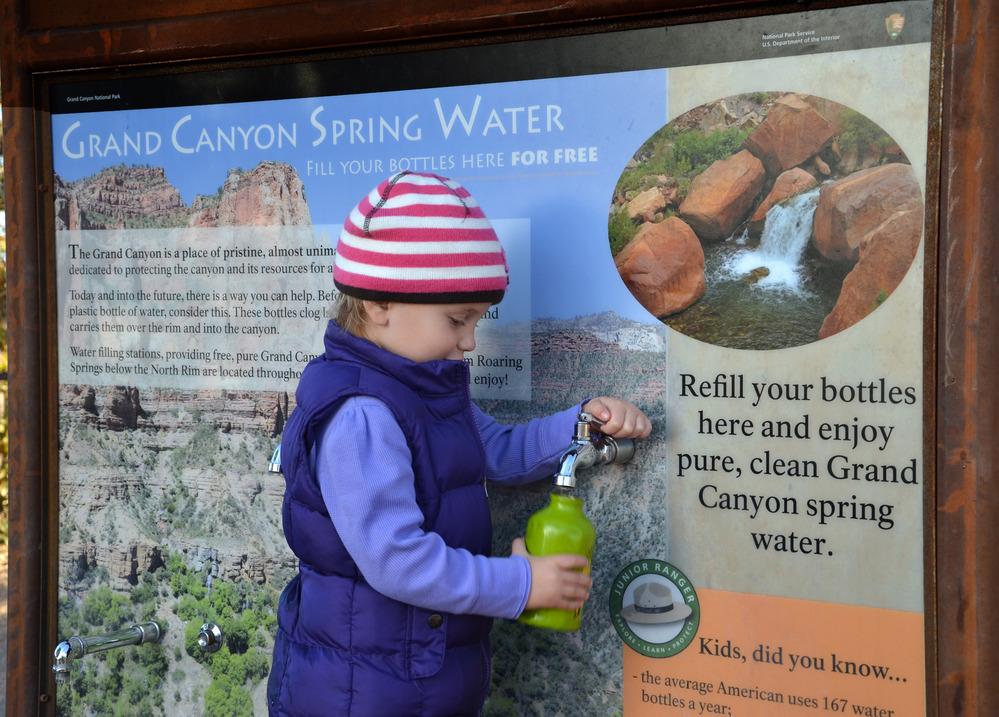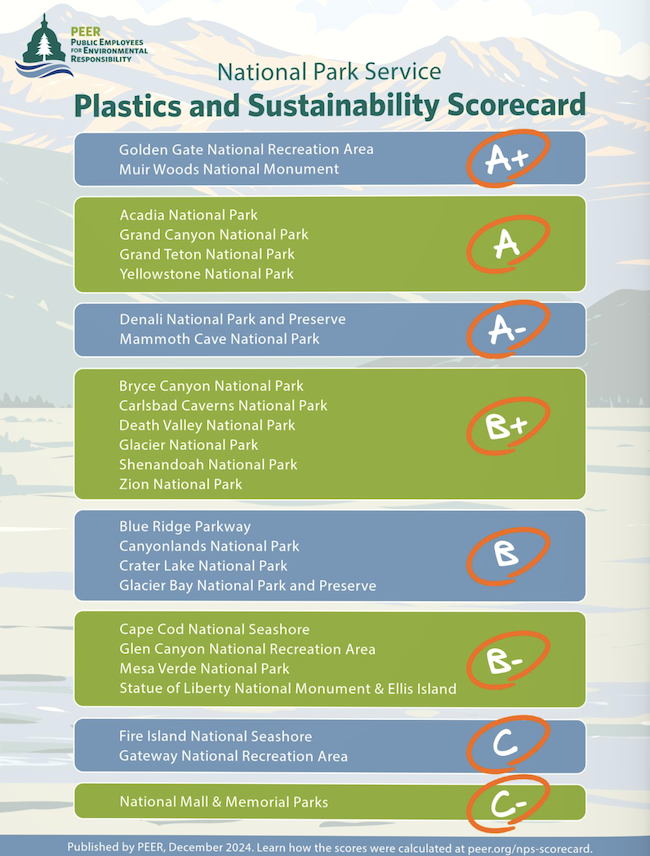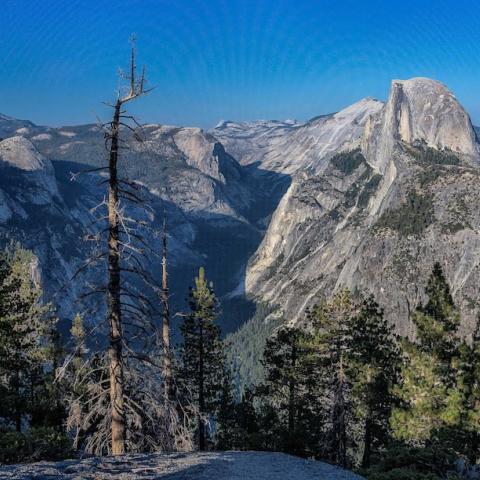
A child fills up a water bottle at a Grand Canyon refilling station / NPS
In 2023, the National Park Service published its Plastics Elimination and Reduction Plan, an initiative to tackle the mounting problem of plastic pollution in national parks. The goal is to entirely eliminate single use plastics on offer in national parks by 2032. That includes the "procurement, sale, and distribution of single-use plastic products and packaging...on department managed lands" according to the plan. It's a multi-year effort, beginning with the usual bureaucratic steps of planning and studies before determining best courses of action.
Plastic pollution in national parks is, like seemingly everywhere else in the world — including the ocean, and, increasingly, the atmosphere — a major problem. The Traveler covered the NPS's plastic elimination efforts and reported on the amount of plastic in the parks in 2023:
"More than 2 million pounds of microplastics, the equivalent of 123 million plastic bottles, settle on national parks and other public lands in the West each year, adding to the growing pollution loads these protected areas carry, according to a 2020 study released by Utah State University researchers.
During the fall of 2019, a U.S. Geological Survey report cited microscopic plastic particles found in high-country lakes in Rocky Mountain National Park in Colorado. While Gregory Wetherbee was studying nitrogen pollution in the park, he found that more than 90 percent of his samples contained colorful plastic particles. Some turned up in a lake above 10,300 feet in elevation."
Late last year, Public Employees for Environmental Responsibility performed something of an audit of the Park Service's efforts to curb plastic use at this point, and published a National Park Service Plastics and Sustainability Scorecard. The scorecard assigned a letter grade for 25 different park properties; those were essentially the only parks that provided enough information to properly score them.

PEER's NPS Plastics scorecard / Screenshot
Despite accusing the NPS of a slow rollout and essentially dragging its feet after announcing the Plastics Elimination and Reduction Plan in 2023, PEER found a lot to like about the Park Service's efforts thus far, though not without reservations.
PEER highlighted a handful of what it considers successes in the past year:
- In Grand Canyon National Park, there are 35 water bottle refilling stations provided by concessionaires and NPS, and they only sell reusable water bottles made of aluminum or steel. They do not sell single-use plastic bottles, food wrappers or containers, or bottled water containing less than 1 gallon.
- In Muir Woods National Monument, water may only be sold in reusable or recyclable aluminum bottles and specialty beverages may only be sold in aluminum cans or compostable cardboard containers. Plastic bottles and containers are prohibited, and the concessionaire provides a water bottle filling station.
- In Golden Gate National Recreation Area, water bottle refilling stations will be provided on vessels and the San Francisco embarkation site, and water bottles must be certified compostable.
According to PEER's scorecard, only 2 park units, Muir Woods National Monument, and Golden Gate National Recreation Area, both in Northern California received an A+. Other national parks receiving top marks were Acadia, Grand Canyon, Grand Teton, Yellowstone, Denali, and Mammoth Cave. National parks receiving the lowest grades were National Mall and Memorial Parks (C-), Fire Island National Seashore (C), and Gateway National Recreation Area (C).
PEER submitted FOIA requests to every national park region for the report.
The organization's conclusions were that some parks are making important progress, some have provided "exemplary" plans for others to follow, greater transparency would help, and the NPS should move faster and not wait for the 2032 deadline.
“While progress is being made, there is no reason why the National Park Service needs seven more years to eliminate single use plastics,” Colleen Teubner, Litigation and Policy Attorney at PEER, in a release. “The extremely slow implementation schedule offers ample opportunities for a big, distracted bureaucracy to place this effort on a backburner and then eventually to abandon it altogether.”
You can read the entire report from PEER, here.




 Support Essential Coverage of Essential Places
Support Essential Coverage of Essential Places






